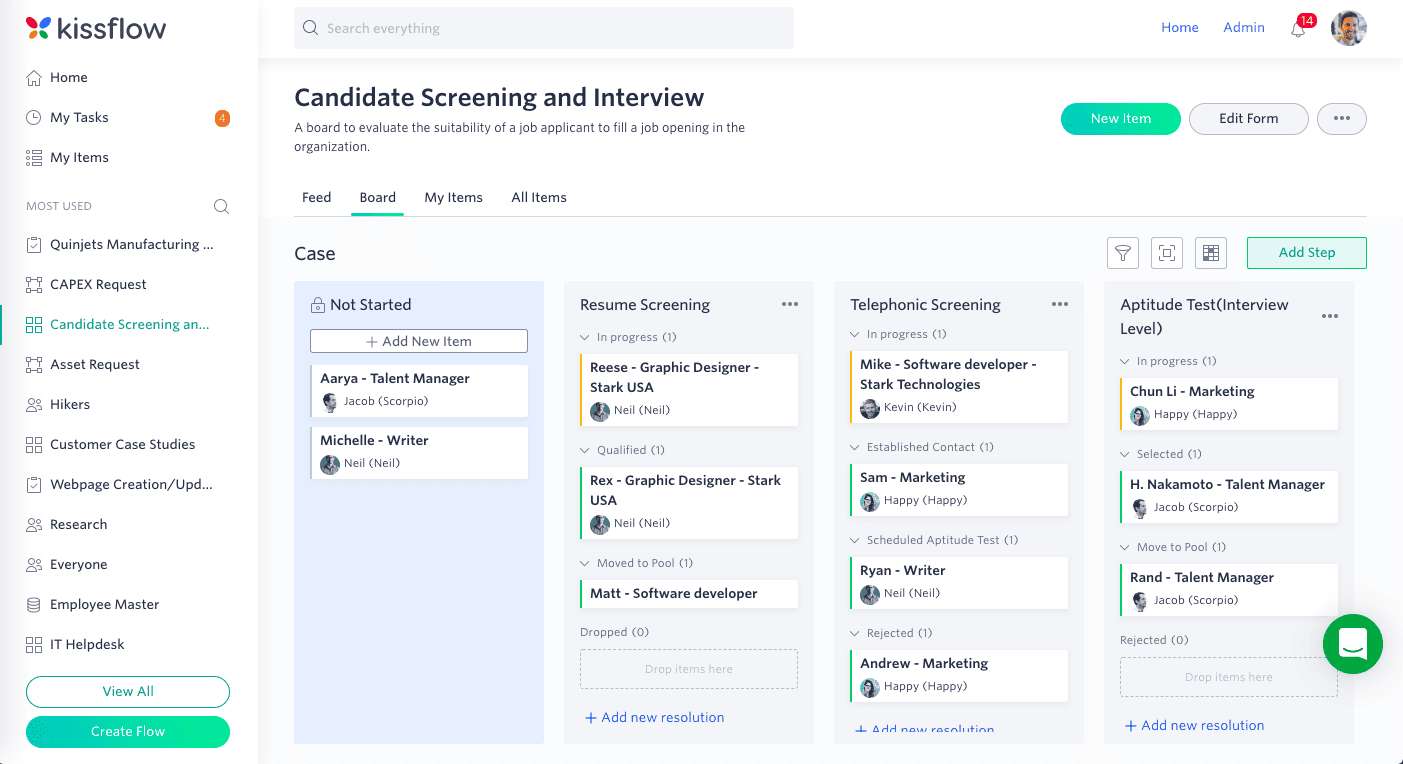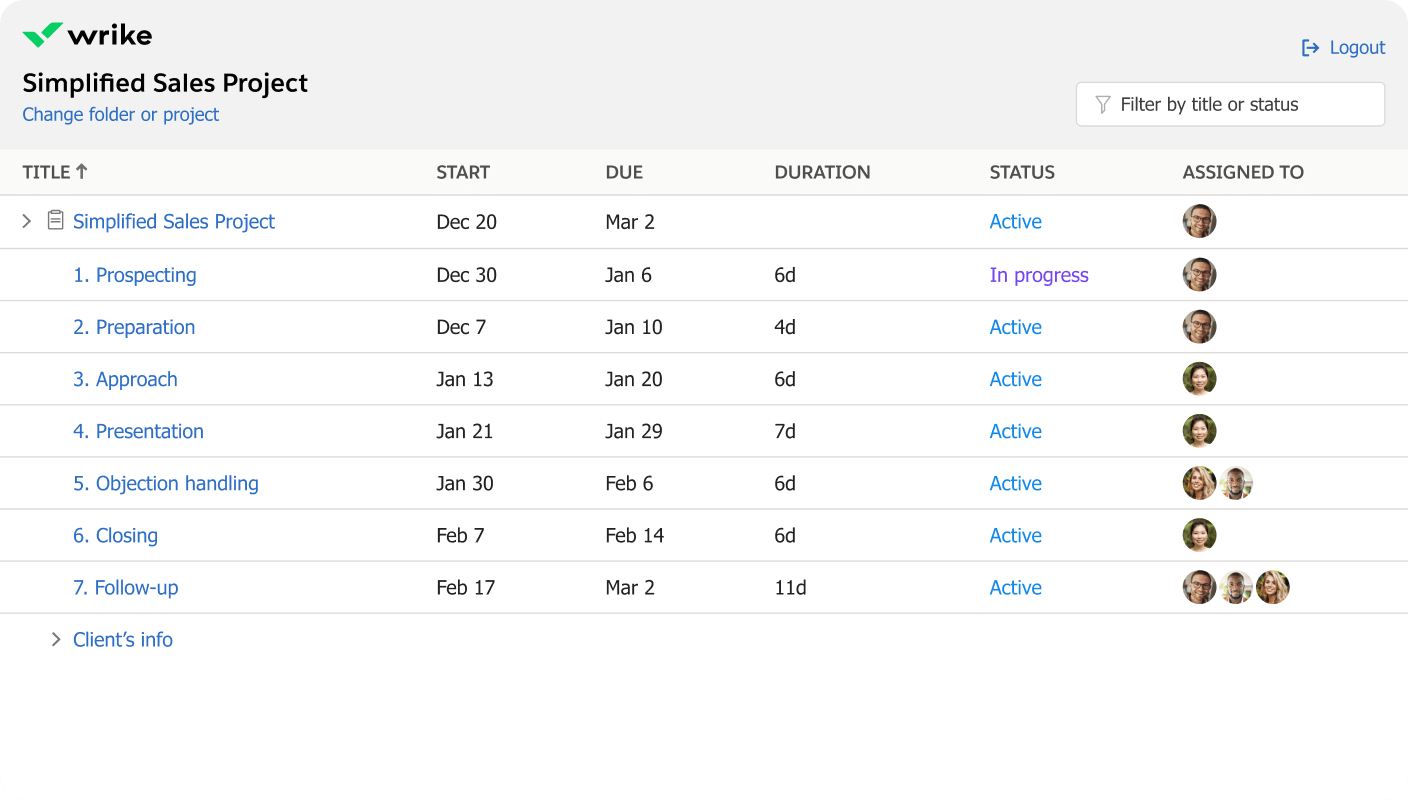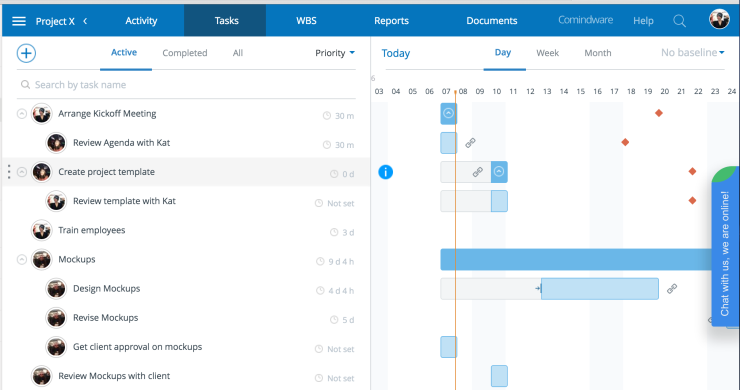An approval workflow is a structured process that orchestrates the review and decision-making steps for tasks, documents, or data.
Whether it’s document approval or other types of approvals, this system involves sending requests to specific individuals or groups for their assessment and final approval. The complexity of the workflow can vary, and it can be managed manually or through automated systems.
Are workflows worth the effort of implementation? Let’s get started with knowing the benefits of an automated approval workflow.
Benefits of Implementing an Approval Workflow
- Streamlined Operations: An approval workflow streamlines processes, ensuring that tasks move efficiently from one stage to another. It minimizes bottlenecks and unnecessary delays.
- Accountability: By defining clear approval paths, organizations can hold specific individuals responsible for their decisions. Accountability ensures that approvals are not overlooked or delayed.
- Transparency: An organized workflow provides visibility into the approval process. Stakeholders can track the status of requests and understand where they are in the pipeline.
- Reduced Errors: Standardized approval rules reduce the chances of errors or oversights. Consistency ensures that decisions align with organizational policies.
Introduction to Approval Workflow
An approval workflow strategically manages various business elements, such as document approvals and process workflows. It establishes a systematic sequence of approval actions, where each step depends on the approver’s decision. This approach enhances efficiency and accountability within organizations.
The process begins with an approval request, which progresses through different stages based on predefined rules. These interconnected approval tasks form an approval lifecycle. Automated workflows further expedite the process, minimizing manual effort.
Defining Approval Workflow
An approval workflow mandates explicit approval actions before a task, document, or data can proceed. It starts with an approval request sent to specific individuals or groups. The process advances based on the approver’s decision.
This system accommodates various approval tasks and conditions to suit different scenarios. Automated workflows manage larger approval lifecycles, with distinct rules governing each approval flow.
Importance of Approval Workflow in Agencies
In agency settings, approval workflows are critical for productivity and efficiency. They ensure consistency during crucial decision-making. The process involves tasks like review, modification, and final approval. Traceability and accountability are integral to this structured approach.
A well-designed approval system optimizes agency operations. Automated workflows eliminate unnecessary delays, providing clarity on approval conditions and flows. Ultimately, they empower agencies to make informed decisions while maintaining efficiency.
Deciphering the Approval Workflow Process
An approval workflow is a systematic procedure that is essential for securing approvals at different administrative levels within an organization. It commences with the generation of an approval request, which then traverses through various stages—be it departmental or hierarchical—until it reaches the final decision point.
The advent of automated approval workflows has streamlined this process, making it swift and seamless. Designed to ensure that each subsequent action hinges on the decision of the approver, this system incorporates approval tasks, rules, and conditions that bolster transparency and minimize errors, thereby optimizing the entire approval lifecycle.
Initiation of a Request
The initiation of an approval request marks the beginning of the approval workflow. This pivotal step can encompass anything from simple document approvals to more intricate tasks, contingent on the type of approval required.
This phase involves the creation and submission of a request, which activates the automated approval workflow. At this juncture, critical parameters like approval conditions and rules are established. The initiation culminates with the request reaching the designated authority for the final decision.
Understanding the approval lifecycle is paramount for managing this phase effectively. Organizations must ensure that the initiation process is crafted to maximize accuracy and efficiency.
Review and Approval
The review and approval phase is characterized by a structured workflow that includes a series of tasks, such as document approvals or specific requests. This system is pivotal for streamlining operations, as it ensures consistent vetting and monitoring of each action.
The approver’s decision is informed by a set of pre-established rules and conditions, which define the approval type and dictate the necessary actions within the approval lifecycle. This can be orchestrated manually or via an automated workflow, enhancing efficiency, transparency, and accountability.
Customizable approval flows afford organizations the flexibility to tailor the process to their unique operational needs.
Execution and Completion
The execution and completion stages are integral to the approval workflow system. The process may involve multiple steps, starting with the initial request and culminating in the final decision by the approver. Each stage is governed by specific approval conditions that must be satisfied before proceeding.
This structured approach to the approval lifecycle guarantees a high degree of transparency, efficiency, and traceability. Automated workflows expedite the process by implementing pre-defined rules for routine tasks, significantly boosting productivity and effectiveness.
Key Components of an Effective Approval Workflow
An effective approval workflow system requires several key components.
- First, it needs a clear and detailed approval process that delineates the approval routes and approval actions to be taken for each type of request. This includes the necessary approval tasks and the conditions under which each approval type is triggered.
- Secondly, it is crucial to have an approver's decision input mechanism that ensures every decision made is rightfully recorded and tracked across the approval lifecycle. Finally, incorporating automated approval workflow can enhance efficiency, ensure consistency of approval rules, and eliminate human errors.
Clear Roles and Responsibilities
Clear roles and responsibilities are crucial in the approval process and various tasks like document approval, approval-request initiation and executing the approver's decision. Each member’s role must be distinctly outlined in the approval workflow to prevent overlaps, confusion or loopholes.
The approval type, approval conditions, and tasks must be delineated per the approval lifecycle – assigning key duties, designing the approval rules, or escalating if needed. This principle not only organizes the approval flows and enhances efficiency but also imbues transparency into the automated approval workflow system.
Defined Approval Paths
The approval system is a structured path outlining the necessary approval tasks and approval flows needed before a decision, project, or document becomes official. This methodical process, known as the approval workflow, ensures all necessary parties review an approval request. It eliminates ambiguity and confusion, addressing necessary approval conditions and approval types.
A well-structured approval process involves key personnel, such as managers, who provide approval action- a crucial phase in the approval lifecycle. The approver’s decision depends largely on the information provided in the document approval.
To ease this process, an automated approval workflow system can be employed, guided by predefined approval rules.
These approval paths serve as a safety net, ensuring all considerations are taken into account before approval is granted. Every organization should strive to have a clear, streamlined process approval workflow to enhance efficiency and cut down on errors.
Transparent Communication
Transparent communication is key in a functional approval system. It ensures that every approval request is properly understood and the approval process is followed to the letter. This includes outlining the approval workflow, defining the approval type, and clarifying the decision made by the approver.
Automated approval workflows can improve transparency by reducing the chances of errors and miscommunication. Specific approval tasks and approval conditions are defined in the system, providing clarity throughout the approval lifecycle. The system can also keep a record of approval actions for future reference, adding another layer of transparency.
Thus, to run smoothly, any approval system must prioritize transparent communication across all stages. These stages include the initial approval request, the approval workflow, and finally, the approver's decision.
Unlocking Efficiency: The Power of Approval Workflows in Agencies
Implementing an approval workflow within agencies revolutionizes business processes by streamlining approval requests and decision-making. This systematic approach, which strongly resembles a project management information system, ensures that every approval task is executed efficiently and adheres to established timelines.
Improved Efficiency and Productivity
The adoption of an automated approval workflow significantly boosts efficiency and productivity. It eliminates common challenges associated with manual approval processes, such as delays caused by human intervention. Automation ensures that approval requests are promptly and systematically addressed.
By implementing precise approval conditions and rules, the risk of miscommunication and errors is minimized. The approval lifecycle becomes more manageable, regardless of the approval type or document involved. This advancement enhances overall productivity.
Enhanced Accountability and Transparency
An effective approval workflow fosters accountability and transparency throughout the process. Starting with an approval request, it progresses through various approval tasks, actions, and conditions. The system can be automated, employing a series of predefined rules.
This automation provides a clear overview of the approval type and flows, ensuring that every document approval is legally binding. Transparency becomes a cornerstone, allowing stakeholders to track the entire lifecycle.
Reduced Errors and Delays
The streamlined approval process minimizes errors and delays. Each approval request follows a stipulated flow, preventing shortcuts or missteps. Automated checks verify compliance with approval conditions before advancing.
Approver decisions are expedited using predefined rules. Consequently, approval tasks are completed promptly, enhancing overall efficiency. The approval system becomes a catalyst for error reduction and smoother operations.
Examples of Approval Workflow Software
Approval Workflow Software, like Kissflow and Wrike, enables companies to streamline their approval process. These systems offer a platform to create unique approval types and set approval conditions for various business processes. They facilitate the document approval by allowing the approver's decision to be captured and stored, thus enhancing transparency.
Teams using this software can also automate approval workflows, reducing manual tasks and potential bottlenecks. They can delineate approval flows, define approval rules and manage the approval lifecycle of numerous processes. From an approval request to the final approval action, these tools oversee the process approval workflow efficiently.
Features and Benefits of Kissflow

Kissflow offers an approval workflow that streamlines the approval process and management of approval tasks. The automated approval workflow allows for faster and efficient handling of tasks, thereby avoiding delays in the approval lifecycle. The software streamlines and automates processes such as document approval and approval requests, making it a versatile tool in an organization.
It also provides options to set up specific approval rules and conditions to guide the approver's decision. With its role-based access and easy to use interface, managing different approval types and approval flows has never been easier. The benefits of using Kissflow include improved workflow efficiency, greater transparency, and enhanced task management.
Advantages of Using Wrike

Wrike offers an efficient approval workflow system designed to streamline the approval process and enhance productivity. The approval actions are customizable, allowing users to create specific approval types suited to their needs. This approval system not only improves clarity and communication but also reduces chances of errors and reworks.
Another advantage includes the automated approval workflow which eliminates the need for manual follow-ups and expedites the approver's decision. Furthermore, Wrike's flexibility allows for setting up approval conditions, rules, and tasks as part of the approval lifecycle thereby enhancing the document approval efficiency.
Why Choose Comindware Tracker?

Comindware Tracker is your prime choice for streamlining and optimizing your approval and business processes.
It offers an innovative approval workflow system that simplifies the whole approval process for different approval types and thus accelerates the approval lifecycle of your business.
- The software also offers features such as automated approval workflows and custom approval rules to ensure transparency and efficiency in all approval tasks.
- It provides superior tools for defining approval actions and approval conditions, eliminating human error and ensuring each approver's decision is taken into account.
With its robust document approval capabilities and process approval workflow designs, Comindware Tracker ensures effective management and execution of complex approval flows.
Optimizing Approval Workflows: A Guide to Best Practices
Implementing an approval workflow is a multi-faceted process that requires meticulous planning. It’s imperative to map out the approval process thoroughly, pinpointing the tasks involved and the hierarchy of decision-makers. This clarity streamlines the workflow and provides transparency for all stakeholders.
Automating the approval system wherever possible can significantly enhance efficiency. An automated workflow minimizes delays and errors, leading to improved performance.
Establishing clear approval conditions and rules is also vital, as it ensures consistency and adherence to organizational policies.
Setting Clear Objectives
Clear objectives are the foundation of an efficient approval workflow. This entails crafting a well-defined process, delineating the tasks required at each stage of the lifecycle, and specifying the conditions for each approval action. Such clarity simplifies the decision-making process and augments the effectiveness of the automated workflow.
Understanding the document approval system, detailing all necessary approval flows, and providing precise instructions for every request can streamline the process. Setting distinct, explicit objectives transforms the approval mechanism into a seamless operation.
Training and Support
Our comprehensive training and support are designed to help users navigate our approval system effectively. From initiating a request to processing an action, we provide a step-by-step guide through the entire system.
Our support encompasses various aspects of the workflow, including setting up approval flows and defining conditions. We offer insights into decision-making for approvers and assist in understanding tasks and automating the lifecycle. Additionally, we guide users in customizing rules to meet their specific needs.
Regular Review and Improvement
Consistent review and refinement are crucial for maintaining an efficient approval workflow. This applies to all elements, from the type of approval and rules to the workflow process and tasks. Streamlining the process by eliminating unnecessary steps saves time and effort.
Incorporating an automated workflow system facilitates rapid processing of requests, enhancing overall efficiency. Regularly assessing decisions helps pinpoint areas for improvement. Keeping the document approval conditions and lifecycle up-to-date is essential for sustaining effectiveness and high operational standards.
Conclusion: The Impact of Approval Workflow on Agency Success
The incorporation of an approval workflow into an agency's operations significantly enhances efficiency and accountability. The approval process facilitates the streamlined delegation of approval tasks, while ensuring that every approval request adheres to established approval rules and conditions.
An automated approval workflow also hastens the process approval workflow, reducing lag time in decision-making and bolstering the overall approval lifecycle. Thus, the approver's decision is effectively guided by a coherent approval system — a clear indicator of organizational success.







